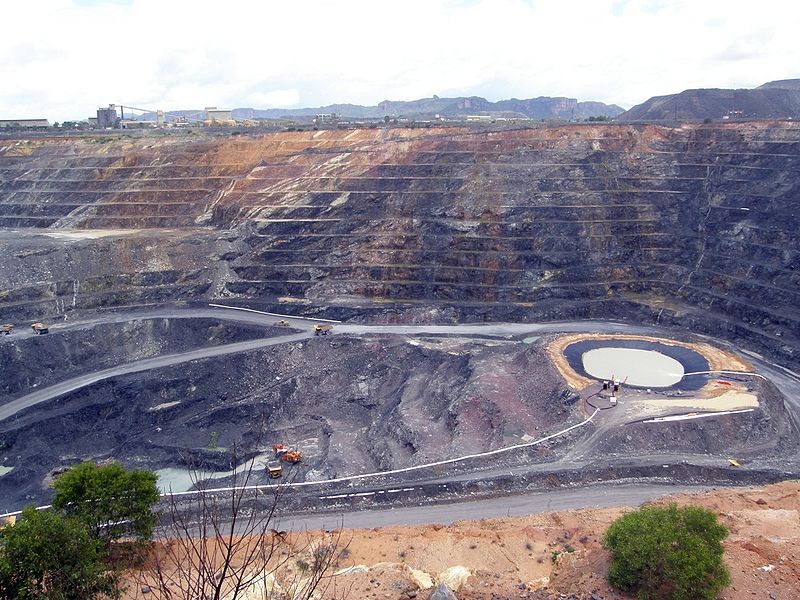Namibia is widely recognized for its vast mineral wealth, which has played a significant role in the country’s economic development. The nation is home to some of the world’s most valuable and sought-after minerals, including diamonds, uranium, and gold, each of which has contributed to Namibia’s economic growth and global standing in the mining sector. This rich mining legacy is a vital part of Namibia’s identity, shaping both its past and future.
The Birth of Namibia’s Mining Industry
Namibia’s mining industry has its roots in the late 19th century when the first European settlers arrived and began exploiting the natural resources of the land. However, it was only in the 20th century, particularly in the aftermath of World War I and with the establishment of South Africa’s mandate over Namibia, that the country’s mining sector began to develop into a global player.
The discovery of diamonds in the early 1900s and uranium deposits in the mid-20th century marked pivotal moments in the country’s mining history. Today, Namibia is one of the leading producers of diamonds, uranium, and gold, and mining remains one of the most important sectors of the economy, accounting for a significant portion of GDP, exports, and government revenue.
Diamonds: Namibia’s Sparkling Gem
Diamonds have long been at the heart of Namibia’s mining industry, shaping its economy and international reputation. The discovery of diamonds off the coast of Namibia in 1908 marked the beginning of the country’s diamond industry, with a rich history of offshore and onshore mining that continues to this day.
The diamond industry in Namibia is dominated by De Beers, a multinational corporation that operates the Namdeb Diamond Corporation, a joint venture with the Namibian government. Namdeb is responsible for extracting diamonds from both land-based and offshore deposits, and the company has developed innovative mining techniques to recover diamonds from the ocean floor, where valuable deposits are found along the country’s coastline.
The Atlantic Ocean is known for its rich underwater diamond deposits, particularly in the Sperrgebiet (Forbidden Zone) area, which extends along the southern coast of Namibia. Offshore mining, conducted using specialized vessels, has helped position Namibia as one of the world’s top producers of gem-quality diamonds, with the country consistently ranking among the top ten diamond producers by value.
Diamonds in Namibia are prized for their exceptional quality and large size. The country is also known for its responsible and ethical diamond mining practices. Namdeb, as well as other diamond mining companies operating in Namibia, adhere to the Kimberley Process Certification Scheme (KPCS), which ensures that diamonds mined in the country are conflict-free and are not being used to finance armed conflict.
The diamond industry’s impact on Namibia’s economy is substantial, providing employment to thousands of workers, contributing to government revenue through taxes and royalties, and supporting various industries, including logistics, construction, and tourism.
Uranium: Powering Namibia’s Future
Uranium mining is another critical pillar of Namibia’s rich mining legacy. The country has some of the world’s largest and highest-grade uranium deposits, making it a major player in the global nuclear energy market. The discovery of uranium deposits in the 1970s, particularly at the Rossing Uranium Mine, marked the beginning of a vibrant uranium mining industry in Namibia.
The Rossing Mine, which has been operational since 1976, is one of the largest open-pit uranium mines in the world. It is owned by Rio Tinto, a leading global mining group, and produces a significant portion of the world’s uranium, which is used in the production of nuclear energy. In addition to Rossing, other major uranium mines in Namibia include Husab, which has become one of the most important uranium mines in the country since its opening in 2016.
Namibia’s uranium industry has been central to its ambitions to diversify its energy mix and contribute to the global nuclear energy sector. The country is home to high-quality uranium, which is used in nuclear power plants around the world. Uranium mining also has a critical role in Namibia’s energy infrastructure, as the country looks to develop its own energy resources to meet growing domestic demand.
Uranium mining has faced challenges, including fluctuations in global uranium prices and environmental concerns, but the industry remains a vital part of Namibia’s economy. The sector is highly regulated, with strict environmental standards and safety protocols in place to minimize the impact of mining on the environment and local communities.
Gold: A Growing Industry with Promise
While Namibia is most renowned for its diamond and uranium industries, gold has emerged as an important contributor to the country’s mining legacy. Gold mining has been taking place in Namibia for over a century, though it was initially on a smaller scale compared to diamonds and uranium. However, in recent decades, the industry has seen significant growth, driven by both domestic and international investment.
The main gold mining operations in Namibia are centered in the Erongo and Karibib regions. One of the key players in the gold sector is B2Gold, a Canadian gold mining company that operates the Otjikoto Mine, one of Namibia’s largest and most productive gold mines. The Otjikoto Mine, located in the north-central part of the country, has been in production since 2015 and continues to be a significant contributor to Namibia’s gold output.
Gold mining in Namibia has been bolstered by rising global gold prices, which have made exploration and extraction more profitable. The country’s gold resources are still underexplored, with potential for further discoveries. Namibia’s favorable geology, stable political environment, and established mining infrastructure have attracted significant foreign investment in gold exploration.
Gold also has a growing importance in Namibia’s export sector. Although the country is not one of the world’s top gold producers, its output has increased steadily, contributing to the diversification of the mining sector and providing job opportunities in the process.
Economic Impacts of Mining: Jobs, Growth, and Challenges
Mining has long been a cornerstone of Namibia’s economy, generating billions of dollars in revenue and supporting thousands of jobs. The mining sector directly contributes to around 10% of Namibia’s GDP and accounts for a large portion of its export earnings. Diamond, uranium, and gold exports are critical drivers of Namibia’s trade balance, and the government relies on mining royalties and taxes to fund public services and infrastructure projects.
In addition to direct employment in mining companies, the sector creates a significant number of indirect jobs in industries such as construction, logistics, manufacturing, and services. Mining operations also support the development of infrastructure, including roads, energy, and water supply, which benefits local communities.
However, the mining sector in Namibia faces several challenges. These include fluctuating commodity prices, which can impact the profitability of mining operations, and environmental concerns related to mining activities. Namibia has stringent environmental regulations to mitigate the impact of mining on ecosystems and communities, but balancing economic development with environmental sustainability remains a complex issue.
Additionally, while mining has brought wealth to Namibia, there are ongoing concerns about how the benefits are distributed. Some communities, particularly those near mining operations, have raised concerns about the social and environmental costs of mining, including land displacement, water usage, and the long-term environmental impact of mining activities.
The Future of Namibia’s Mining Industry
Namibia’s mining sector is poised for continued growth, with promising opportunities in diamonds, uranium, and gold. The country’s mineral wealth will remain a key pillar of its economy, but as the global market for these commodities fluctuates, Namibia will need to focus on diversifying its economy and improving the sustainability of its mining operations.
Exploration in Namibia’s mining sector is expected to grow, particularly as technology advances and new methods for extracting minerals are developed. The government of Namibia is also working to attract foreign investment in the sector, particularly in value-added industries, such as mineral beneficiation and refining.
As the country continues to navigate the complexities of sustainable development, it will need to balance the benefits of its mining legacy with the need to protect the environment, address social inequalities, and foster long-term economic stability.
Namibia’s rich mining legacy, built on diamonds, uranium, and gold, has been fundamental to the country’s economic development and global reputation. The country’s mining sector has provided significant wealth, jobs, and opportunities, but it has also faced challenges related to sustainability, social equity, and environmental impact. As Namibia continues to build on its mining legacy, the future of its mineral-rich industries will be shaped by how the country navigates these complexities, balancing growth with responsible resource management.
With continued investment, innovation, and a focus on environmental and social responsibility, Namibia’s mining industry will remain a cornerstone of its economy for years to come, helping to shape a prosperous future for the country and its people.
Join 'Namibia Today' WhatsApp Channel
Get the breaking news in Namibia — direct to your WhatsApp.
CLICK HERE TO JOIN












